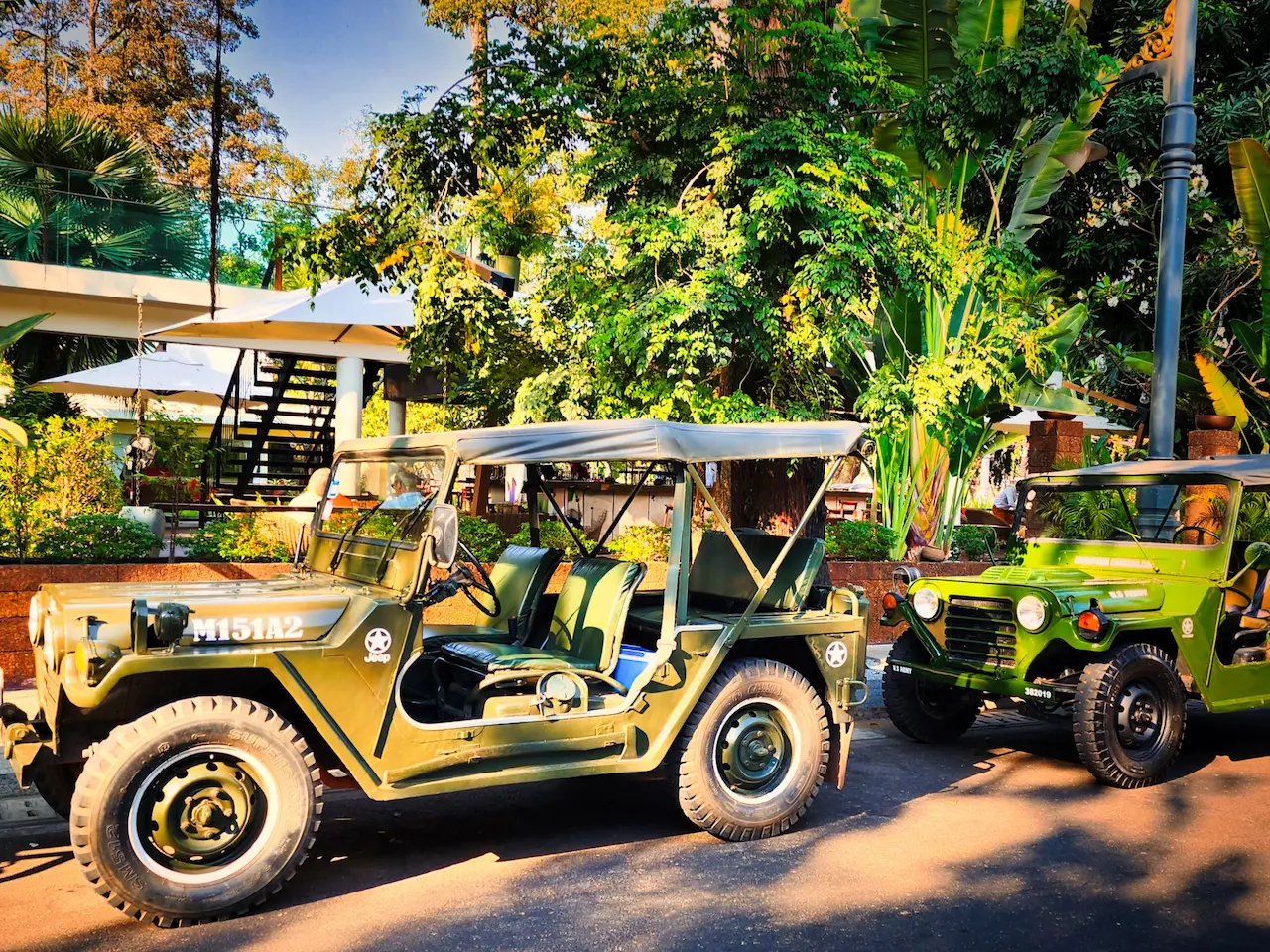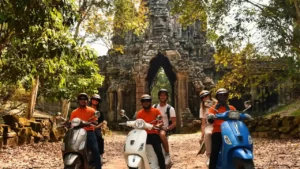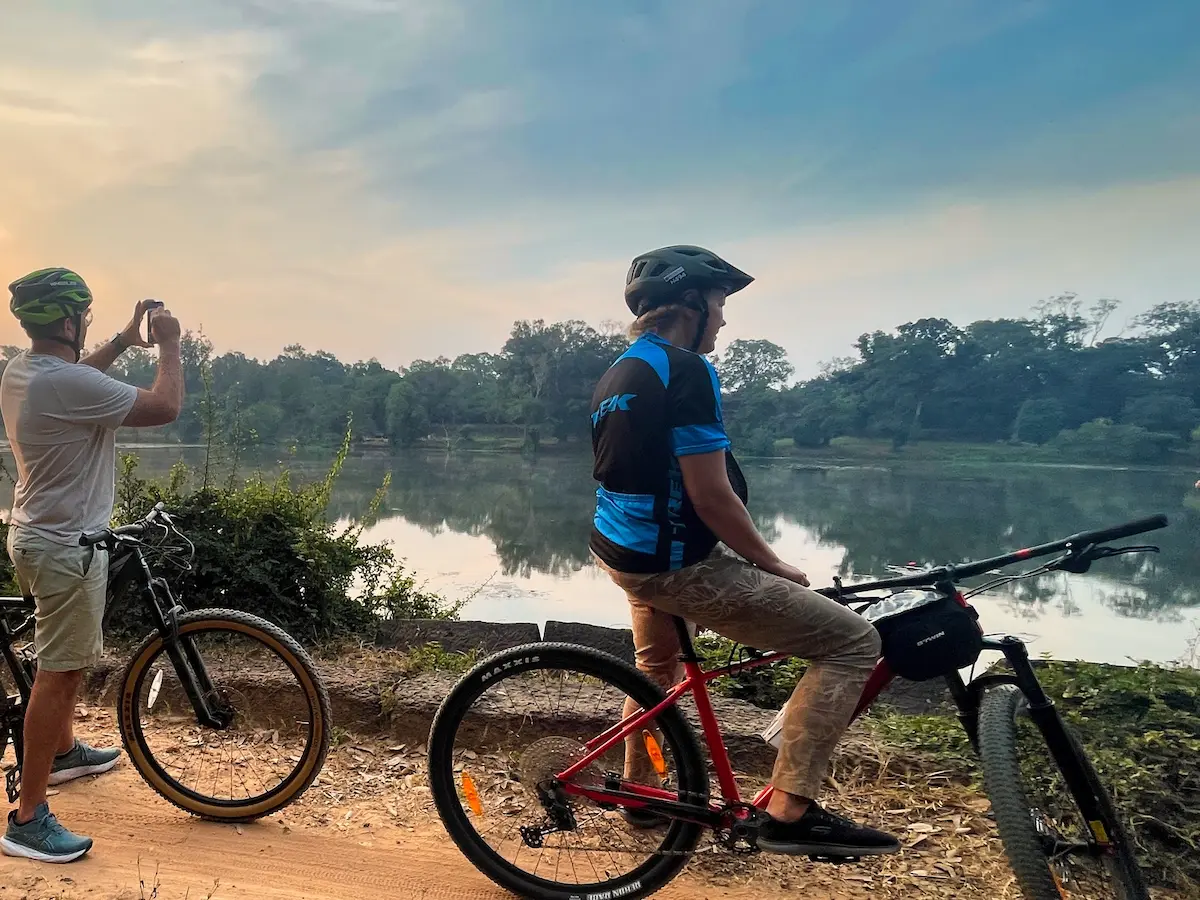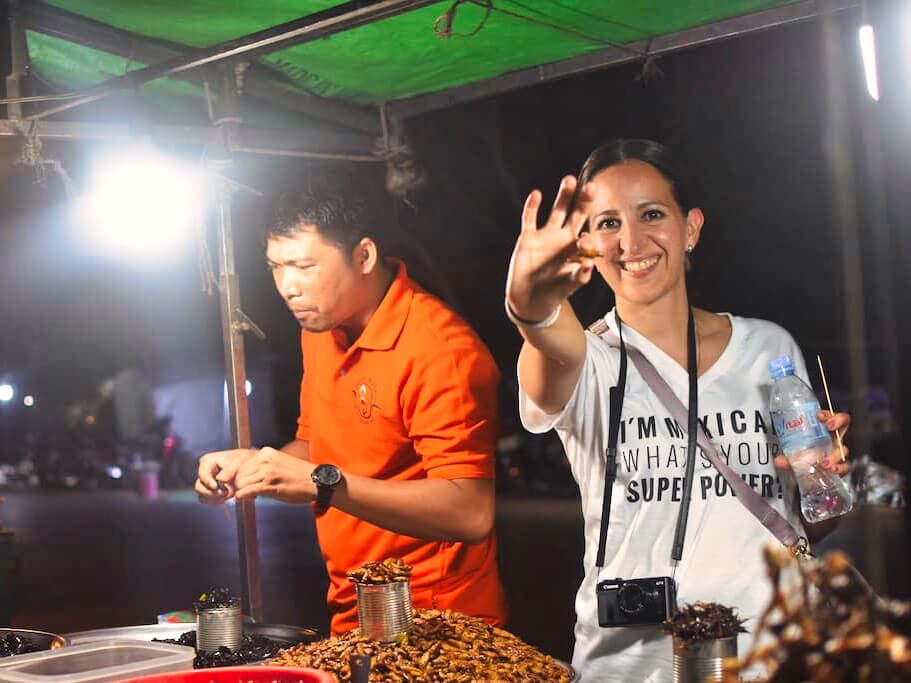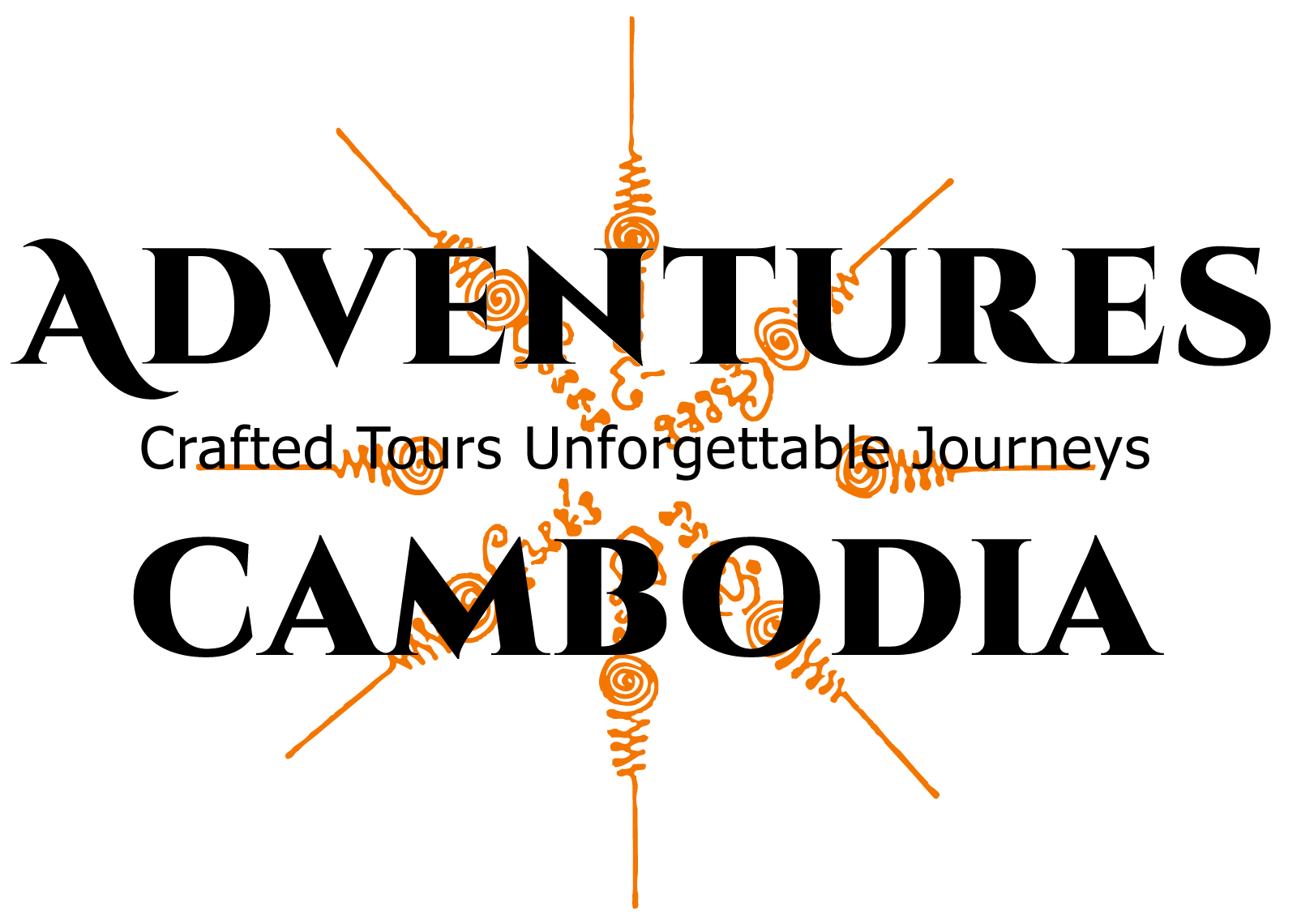The Angkor Small Circuit is a must-do route for anyone visiting the iconic Angkor Archaeological Park in Siem Reap, Cambodia. This itinerary covers some of the most significant and awe-inspiring temples, including Angkor Wat, Bayon Temple, and Ta Prohm, among others. Each site offers a unique glimpse into the architectural brilliance and cultural richness of the ancient Khmer Empire. Whether you’re a history aficionado, a photography enthusiast, or an adventurous traveler, the Angkor Small Circuit promises an unforgettable experience.
The Magic of Angkor: An Introduction
Angkor, the ancient capital of the Khmer Empire, is a sprawling complex of temples and ruins nestled in the lush forests of Siem Reap, Cambodia. It represents a pinnacle of classical Khmer architecture and has been recognized as a UNESCO World Heritage Site. The Angkor Archaeological Park spans over 400 square kilometers, featuring renowned sites like Angkor Wat, the enigmatic Bayon Temple, and the mystical Ta Prohm. Angkor Wat itself is the world’s largest religious structure, covering some 160 hectares (400 acres), and marks the high point of Khmer architecture.
Preparing for Your Angkor Adventure
Before embarking on your journey, it’s essential to be well-prepared:
- Entry Passes: Purchase a temple pass, available as 1-day, 3-day, or 7-day options. Since COVID-19, passes can now be bought directly online. This has the double advantage of avoiding queues and allowing for a soft copy, so there’s no worry about losing your ticket.
- Essential Items: Comfortable walking shoes, a hat, sunscreen, insect repellent, and plenty of water.
Transportation for Angkor Small Circuit
- Tuk-Tuks: A popular and convenient option. Pro tip: Avoid the Indian-made tuk-tuk and instead ask for a remork, which is larger and offers a better view when navigating the complex.
- Bicycles: For the more adventurous, renting a bike offers flexibility. Pro tip: While city bikes look nice, you will be happier renting a VTT or a better version for the gear options. Even though the complex is flat, you will need to pedal a lot, and the wind and heat can be challenging. Consider an electric mountain bike.
- Vespa Tour: If you wish to see Angkor like no one else but don’t feel the rush for a bicycle tour, you can still enjoy most of the hidden trails and jungle paths with our Angkor Wat Tour by Vespa.
- Tours by Jeeps: Enjoy the thrill of an open vintage Jeep tour. You can even opt for a “Behind the Wheel” adventure, taking control yourself. Don’t worry, if you prefer to relax and enjoy the view, a driver can take over anytime.
Small Circuit Route
- Length: 30 km from Siem Reap and return.
- Sight-Seeing Time: Minimum 4 hours up to 8 (most temple sites are open from 7:30 AM to 5:30 PM, excepting the sunrise and sunset spots. Angkor Wat opens at 5:00 AM and Phnom Bakheng opens at 5:00 AM and closes at 5:30 PM).
The Small circuit:
Angkor Wat: The Crown Jewel
Angkor Wat is the largest religious monument in the world and the centerpiece of the Angkor Small Circuit. Built in the early 12th century by King Suryavarman II, it originally served as a Hindu temple dedicated to Vishnu before transforming into a Buddhist site. The temple’s iconic five towers, representing Mount Meru, and its extensive bas-reliefs depicting Hindu epics make it a masterpiece of Khmer architecture.
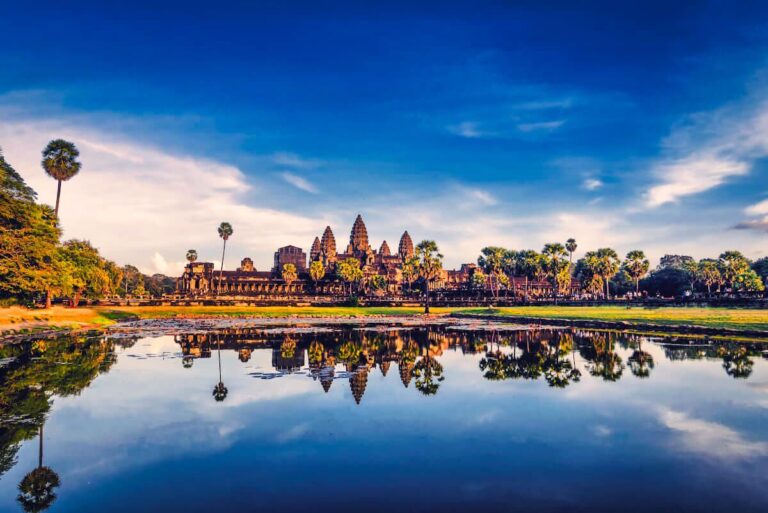

History and Significance: Angkor Wat stands as a testament to the ingenuity and spiritual devotion of the Khmer Empire. Its design, symbolic of the universe, reflects both Hindu and Buddhist cosmology.
Architectural Highlights: The temple’s extensive bas-reliefs, intricate carvings, and the grandeur of its central tower are among the key highlights. The gallery walls depict scenes from the Ramayana and Mahabharata, providing a glimpse into ancient Khmer mythology.
Angkor Wat bas-reliefs: are not just decorative elements; they are a narrative that tells the story of the Khmer Empire like the Churning of the Ocean of Milk at Angkor Wat.
Angkor Thom: The Great City
Angkor Thom is a massive, fortified city established by King Jayavarman VII in the late 12th century. Encompassing several key temples and monuments, it served as the capital of the Khmer Empire.
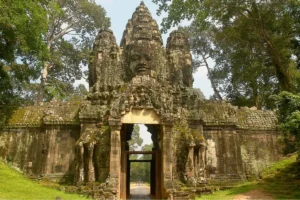

Historical Significance: Angkor Thom, meaning “Great City,” was the last and most enduring capital of the Khmer Empire. It was built to protect and showcase the empire’s grandeur and spiritual beliefs.
Key Features: The city is surrounded by an 8-meter-high wall, punctuated by five monumental gates. Each gate is adorned with a tower featuring four faces, reminiscent of the Bayon Temple’s iconic sculptures. The Victory Gate and the South Gate are particularly notable for their grandeur and detailed carvings. Recently, the Dei Chhnang Gate (Northern Gate) restoration was completed, making it one of the most picturesque gates. Most bicycle tours in Angkor ride off this wall to arrive there.
Angkor Thom South Gate
The South Gate of Angkor Thom, a key attraction in Angkor Archaeological Park, transports visitors back in time with its impressive scale and design. It features the best-preserved causeway, originally designed to awe visitors, a sensation that persists to this day.
Historical Background: Known as the Tonle Om Gate, this 12th-century structure is one of five gates in the 8-meter-high walls of Angkor Thom.
Bayon Temple: Faces of History
The Bayon Temple is famed for its serene and massive stone faces, each bearing a mysterious smile. Located in the center of Angkor Thom, Bayon serves as the state temple of King Jayavarman VII and represents the apogee of Khmer architectural genius.
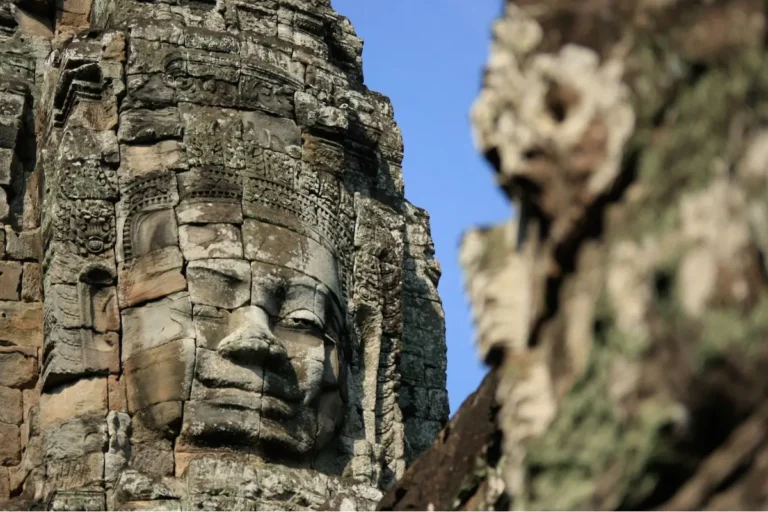
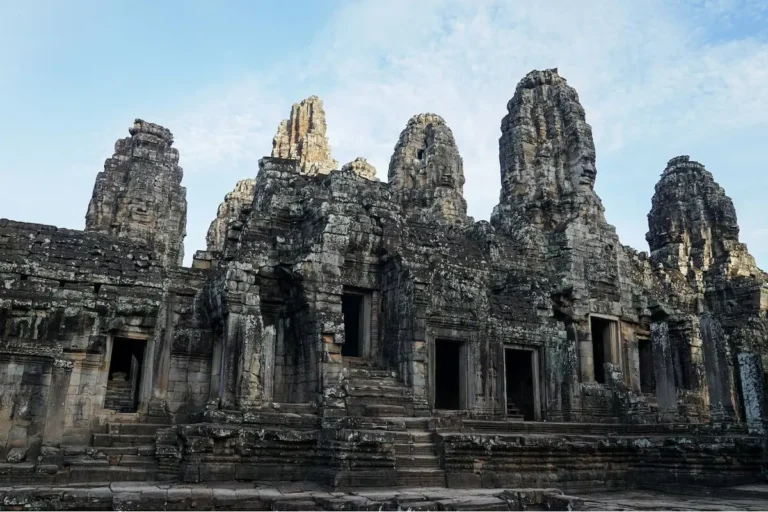
Historical Background: Constructed in the late 12th or early 13th century, Bayon was the last state temple built at Angkor.
Unique Features: Bayon’s most striking feature is the multitude of serene and smiling stone faces, thought to represent either King Jayavarman VII or the bodhisattva Avalokiteshvara. The temple also has one of the only extensive and detailed bas-reliefs depicting historical events and everyday life in 12th-century Cambodia such as:
- Naval Battle and Daily Life Scenes – in the eastern part of the southern gallery.
- King Retires to the Forest to Celebrate Indrabhisaka – in the northern part of the western gallery.
- Khmer Games and Worshippers – in the western part of the northern gallery.
These parts are often missed as visitors are attracted by its giant faces, but if you have an expert tour guide, they will bring these scenes to life.
Terrace of the Elephants: A Royal Platform
The Terrace of the Elephants is an impressive 350-meter-long platform used by King Jayavarman VII as a grand viewing stand for public ceremonies and parades.

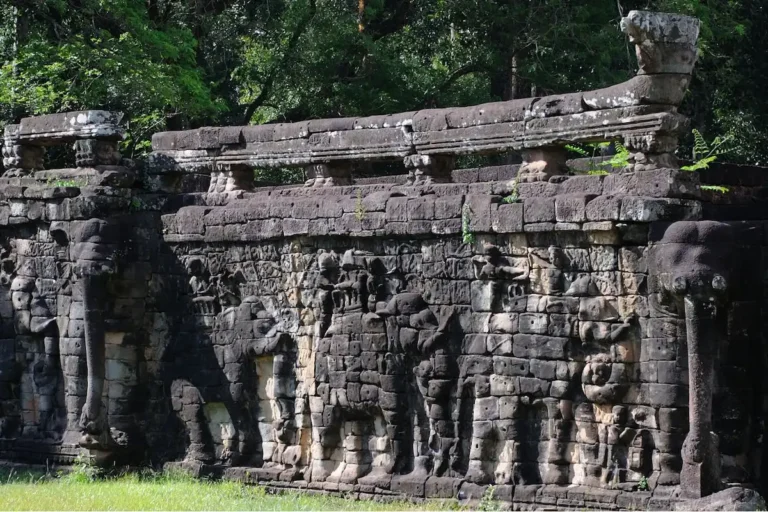
Historical Context: Built in laterite in the early 11th century, the structure suffered damage during the Cham sack of 1177. It was reconstructed with new terraces faced with sandstone and other modifications through the early 13th century. Additional transformations were carried out between the 14th and 16th centuries.
Architectural Details: The terrace is named for the carved elephants that adorn its eastern face. These carvings depict elephants engaged in various activities, adding to the terrace’s grandeur. The central section features three-headed elephants and garudas, enhancing the terrace’s symbolic power and artistic beauty.
Terrace of the Leper King: Mysteries Unveiled
The Terrace of the Leper King is another significant platform within Angkor Thom, shrouded in mystery and rich in intricate carvings.
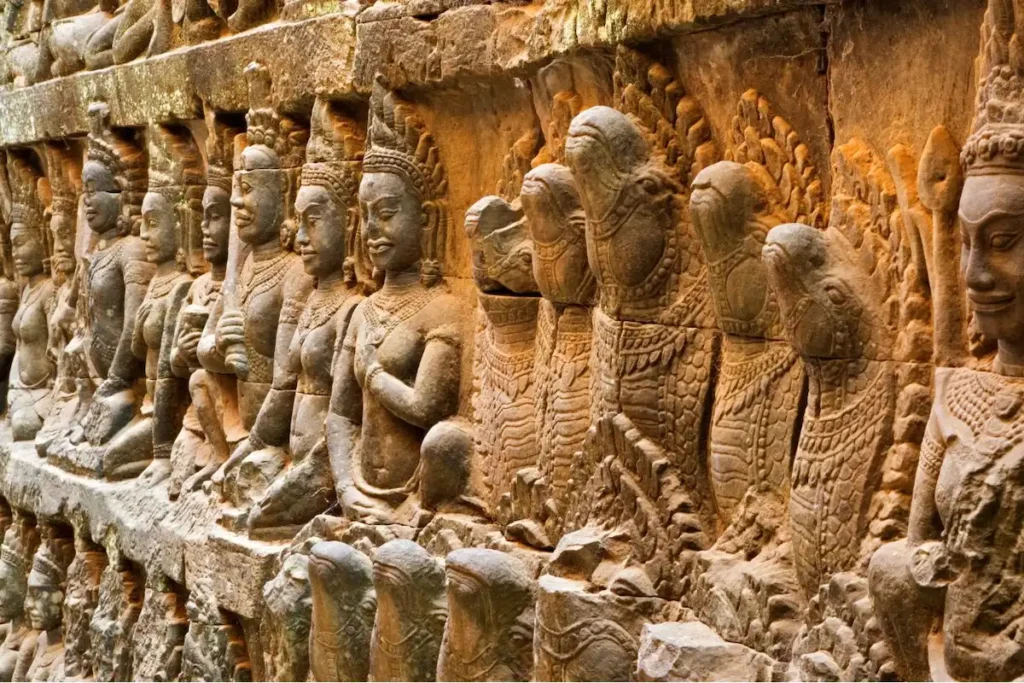
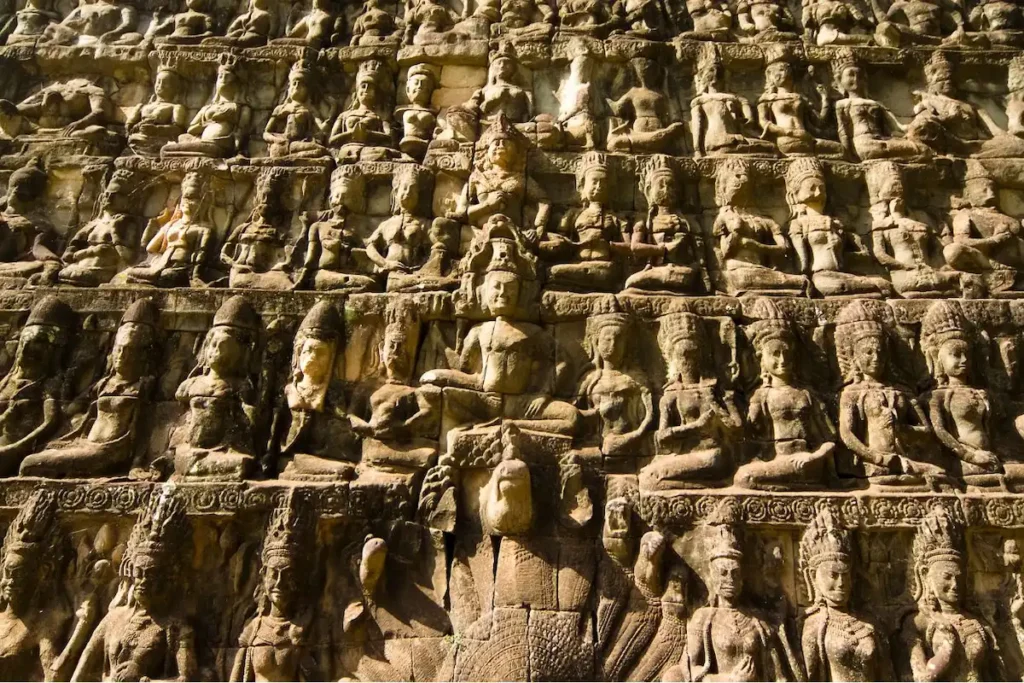
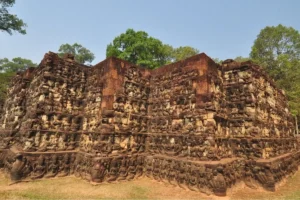
Historical Insights: Named after a statue found at the site, which resembles a person suffering from leprosy, the terrace dates back to the late 12th century. The exact purpose of the terrace remains unclear, adding to its enigmatic allure.
Unique Carvings: The terrace is adorned with detailed bas-reliefs depicting mythological and royal scenes. The intricate carvings on the inner walls, which were discovered more recently, are exceptionally well-preserved and offer a fascinating glimpse into Khmer mythology and artistry.
Ta Prohm: Nature’s Embrace
Ta Prohm is one of Angkor’s most atmospheric temples, left largely unrestored with massive tree roots intertwined with its ruins. This temple, made famous by the “Tomb Raider” movie, provides a glimpse of how the temples of Angkor looked when first rediscovered.
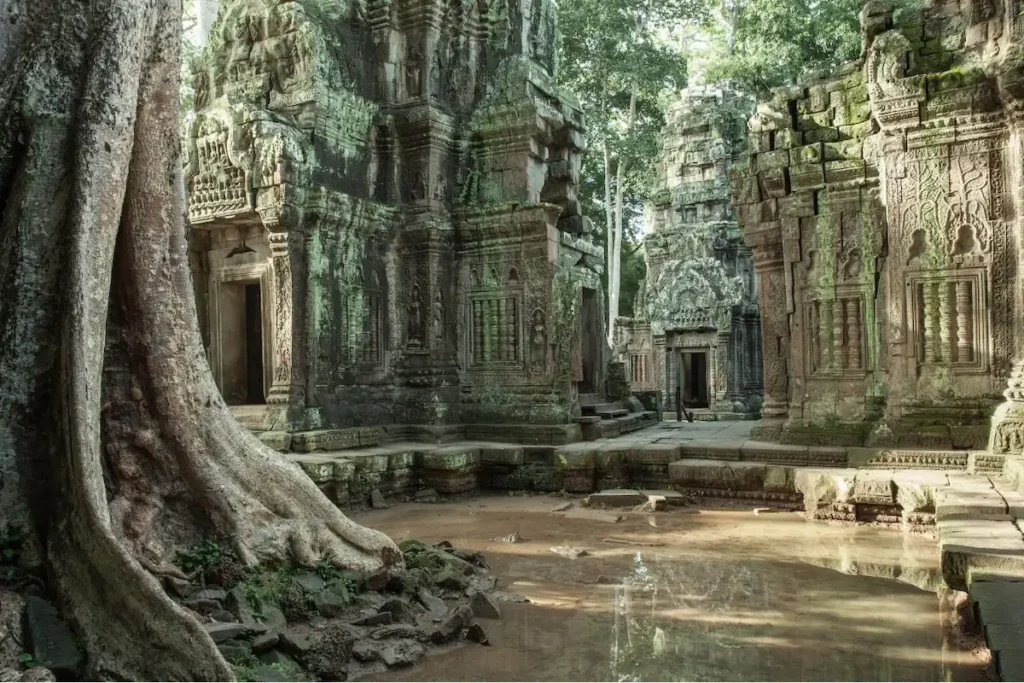


Temple History: Built in the late 12th and early 13th centuries by King Jayavarman VII, Ta Prohm was a Buddhist monastery.
Notable Scenes: The intertwining of nature and architecture at Ta Prohm is particularly captivating. The sight of giant roots enveloping the temple’s structures creates a hauntingly beautiful spectacle.
“Tomb Raider” Connection: Ta Prohm’s cinematic appearance in the 2001 film “Lara Croft: Tomb Raider” has significantly increased its popularity among tourists, adding a layer of modern mystique to its ancient allure.
Tips and more
Cultural Etiquette at Angkor Temples
When visiting the temples of Angkor, it’s essential to show respect for the sacred nature of these sites:
- Respectful Behavior: Avoid loud conversations and be mindful of the sanctity of the temples.
- Dress Code: Wear modest clothing that covers your shoulders and knees to show respect for the religious significance of the temples.
Local Guides: To Hire or Not to Hire?
Hiring a local guide can greatly enhance your visit to Angkor:
- Benefits: In-depth historical knowledge, navigation assistance, and cultural insights.
- Expert tour guides provide historical context and in-depth knowledge. They are also very happy to talk about Cambodia’s past and present, giving you more than a temple tour but a better understanding of our country.
FAQs
- How long does it take to complete the Angkor Small Circuit?
Typically, it takes one full day to explore the major temples on the Small Circuit. - Do I need a guide to visit Angkor?
While not essential, hiring a guide can provide valuable insights and enhance your experience. - What should I wear when visiting Angkor temples?
Wear modest clothing that covers your shoulders and knees to show respect for the religious sites. - Are there any restrictions on photography at Angkor?
Photography is allowed, but avoid using flash inside temples and be respectful of other visitors. Drones and 360 cameras are not allowed or require a commercial permit, which can be requested at the Apsara office before travelling, we can organize the request for you if needed. - Can I buy food and drinks inside the Angkor Archaeological Park?
Yes, there are several vendors and restaurants within the park where you can purchase refreshments.
Conclusion
For Tours in Siem Reap Angkor and Cambodia, the Angkor Small Circuit itinerary offers a profound journey through some of the most iconic and awe-inspiring temples of the Angkor Archaeological Park. From the majestic Angkor Wat to the enigmatic Bayon and the mystical Ta Prohm, each site reveals a unique aspect of the rich cultural heritage of the Khmer Empire. Whether you’re marveling at the intricate bas-reliefs, capturing the perfect sunrise shot, or simply soaking in the serene atmosphere, the Angkor Small Circuit promises an unforgettable adventure through one of the world’s most significant historical landscapes. On this page you will see our Angkor Wat Tours.



